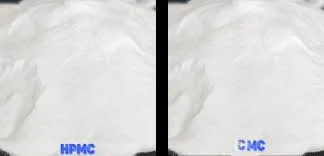
ನವೆಂ . 01, 2024 10:20 Back to list
Exploring HPMC Structure and Its Applications in Pharmaceutical Formulations
Understanding HPMC Structure and Its Applications
Hydroxypropyl methylcellulose (HPMC) is a semi-synthetic polymer derived from cellulose, a natural polymer found in plant cell walls. Its unique structure and properties have made it an essential ingredient in various industries, including pharmaceuticals, food, cosmetics, and construction. This article explores the intricate structure of HPMC and its wide-ranging applications.
Understanding HPMC Structure and Its Applications
One of the vital aspects of HPMC is its remarkable thickening and gelling properties. When HPMC is dispersed in water, it forms a viscous solution due to its ability to hydrogen bond with water molecules. This property is particularly valuable in the pharmaceutical industry, where HPMC is commonly used as a binder, film-former, and controlled-release agent in tablet formulations. It enhances the consistency of products while ensuring the uniform distribution of active ingredients, which is critical for effective drug delivery.
hpmc structure

In the food industry, HPMC acts as a stabilizer and emulsifier. It helps maintain texture and moisture content in various food products, including sauces, ice creams, and baked goods. Its ability to form gels is utilized in creating low-fat products, as it mimics the mouthfeel of fats without adding calories. Additionally, HPMC is non-toxic and can be used in food applications without regulatory concerns, making it a popular choice for health-conscious consumers.
The cosmetic and personal care industries also benefit from HPMC’s properties. It serves as a thickening agent in lotions, creams, and shampoos, improving the texture and stability of these products. Furthermore, HPMC is often used in hydrogel formulations for skincare, providing a smooth application and enhanced moisture retention.
Apart from these sectors, HPMC has found its place in construction as well. It is used in cement and plaster formulations to improve workability and extend the open time, enabling more manageable application processes. Its water-retention properties help maintain the necessary moisture levels for effective curing, enhancing the durability of construction materials.
In summary, the structure of HPMC, characterized by its modified cellulose backbone, endows it with unique properties that make it an invaluable component across various industries. Its functions as a thickener, stabilizer, and binder are pivotal in enhancing the performance and quality of products, from pharmaceuticals to food items and cosmetic formulations. As industries continue to seek sustainable and effective solutions, HPMC presents a reliable option, indicating that its relevance is likely to grow in the years to come.
-
Versatile Hpmc Uses in Different Industries
NewsJun.19,2025
-
Redispersible Powder's Role in Enhancing Durability of Construction Products
NewsJun.19,2025
-
Hydroxyethyl Cellulose Applications Driving Green Industrial Processes
NewsJun.19,2025
-
Exploring Different Redispersible Polymer Powder
NewsJun.19,2025
-
Choosing the Right Mortar Bonding Agent
NewsJun.19,2025
-
Applications and Significance of China Hpmc in Modern Industries
NewsJun.19,2025







